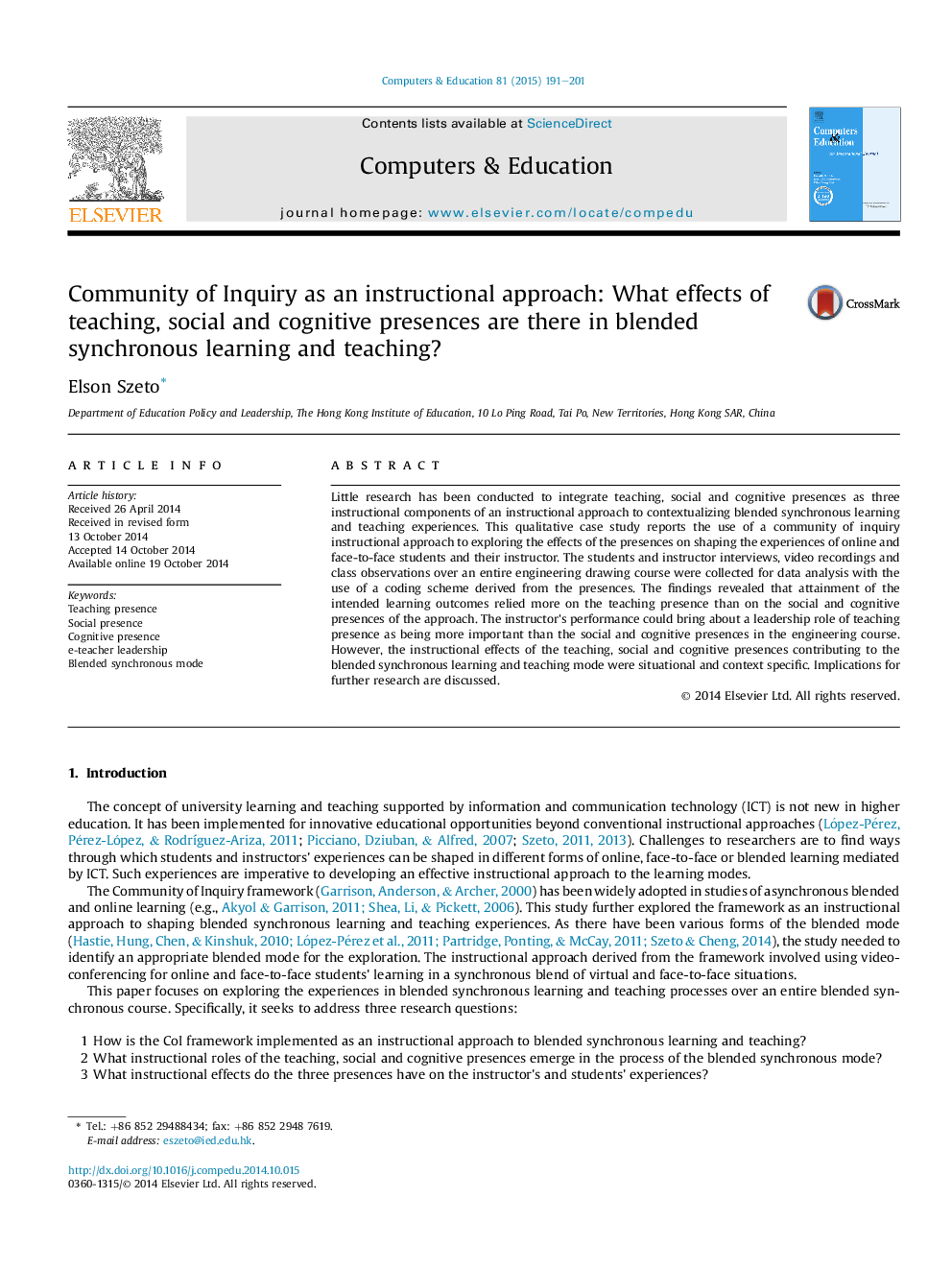| Article ID | Journal | Published Year | Pages | File Type |
|---|---|---|---|---|
| 348335 | Computers & Education | 2015 | 11 Pages |
•The CoI framework was regarded as an instructional approach.•Teaching, social and cognitive presences were integrated as the instructional components.•The teaching presence component might play a prominent role.•This role was interpreted as e-teacher leadership in the blended synchronous mode.•The instructional effects of the three presences were situational and context specific.
Little research has been conducted to integrate teaching, social and cognitive presences as three instructional components of an instructional approach to contextualizing blended synchronous learning and teaching experiences. This qualitative case study reports the use of a community of inquiry instructional approach to exploring the effects of the presences on shaping the experiences of online and face-to-face students and their instructor. The students and instructor interviews, video recordings and class observations over an entire engineering drawing course were collected for data analysis with the use of a coding scheme derived from the presences. The findings revealed that attainment of the intended learning outcomes relied more on the teaching presence than on the social and cognitive presences of the approach. The instructor's performance could bring about a leadership role of teaching presence as being more important than the social and cognitive presences in the engineering course. However, the instructional effects of the teaching, social and cognitive presences contributing to the blended synchronous learning and teaching mode were situational and context specific. Implications for further research are discussed.
